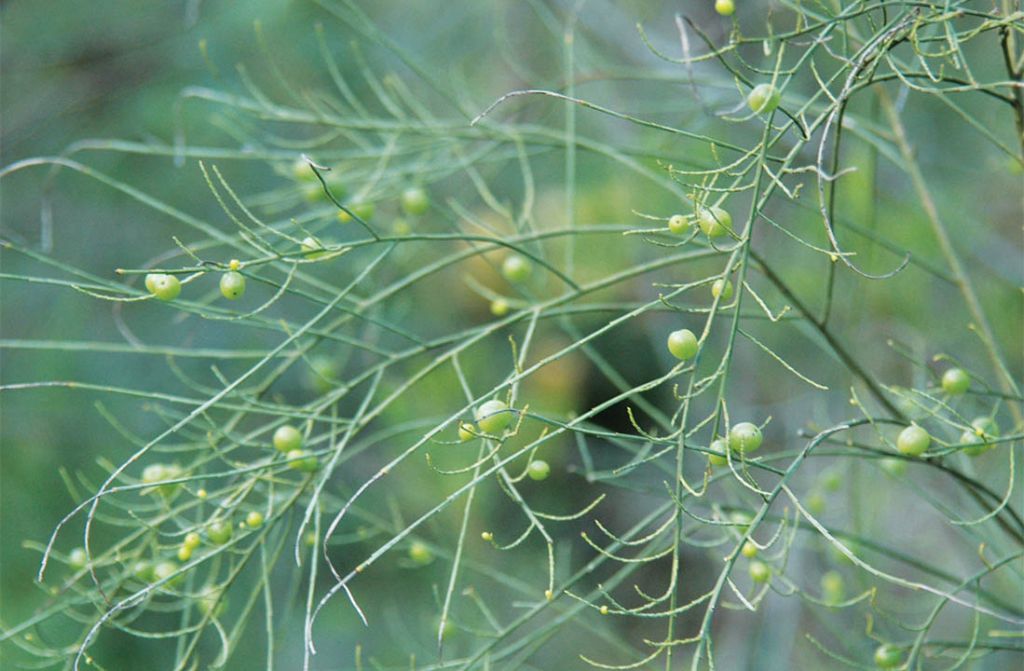Growing in the more open sections of dry sclerophyl forest the Native Currant (Leptomeria acida) has an unusual characteristic in that it can be parasitic off the roots of other shrubs and trees. It has no leaves as such, but rather there are short to lengthy green protrusions that extend from somewhat thicker branchlets. These protrusions are where the fruit is attached.
The fruit is known to possess a reasonably high level of vitamin C, and as such are edible, preferably when ripe and turning towards a reddish colour. The berries may be consumed earlier in spite of the somewhat bitter, acid taste. Indigenous people ate the fruit as a thirst quencher when it was in season. The flower is a yellowish-green colour and being very small it is often overlooked by the casual bushwalker.
Being an adaptable plant, largely because it relies on a host plant, it can tolerate a considerable range of temperatures, soil types and habitat conditions. Distribution is widespread, but not prolific, along the eastern Australian Coastal strip, extending up into the slopes of the Great Dividing Range where suitable habitats exist.
Propagation for both home gardens and for commercial use is possible but careful preparations are necessary. In these situations it can survive relying on its own root system to gain nutrients from the soil. In ideal conditions the plant may reach up to 2m in height.
It may be that the bushwalker could possibly confuse the berries of the Persoonia (Geebung) species as being the Native Currant, as some Geebung fruiting periods overlap. Geebung berries have a distinctive small spike at the base and should not be consumed until they turn a purple colour.
– Lachlan Turner











